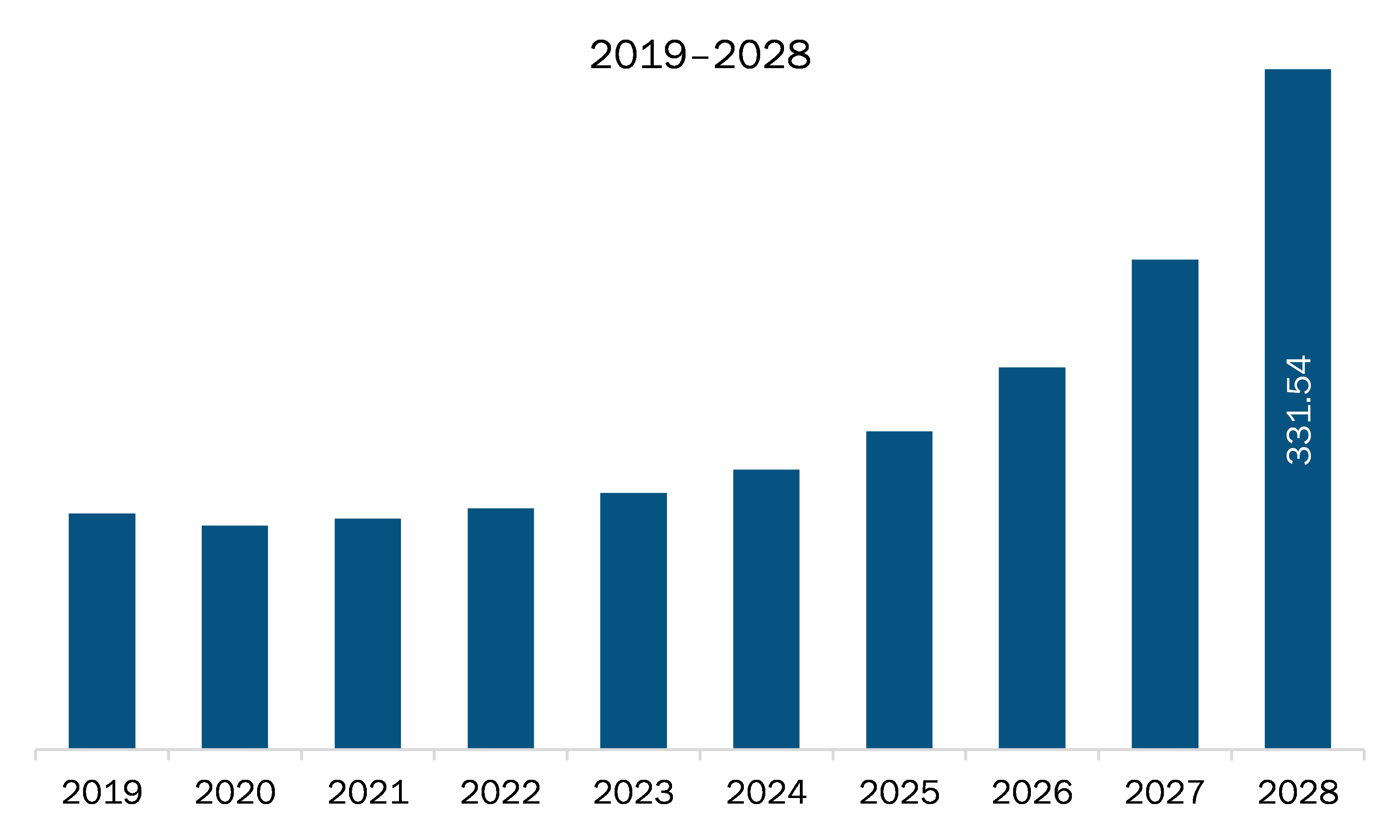The APAC plastic to fuel market is expected to grow from US$ 112.49 million in 2021 to US$ 331.54 million by 2028; it is estimated to grow at a CAGR of 16.7% from 2021 to 2028.
China, India, Japan, South Korea, and Australia are major economies in APAC. Introduction of go green process is expected to fuel the APAC plastic to fuel market growth. Plastic to fuel initiatives is starting to gain traction in the energy industry, as more people become aware of the widespread environmental damage caused by single-use plastics and people's insufficient recycling habits. This is prompting researchers to look for new ways to dispose of the growing plastic output. An increase in government subsidies for green technology development and attempts to encourage such technologies through increased financing are projected to provide significant market growth possibilities. Furthermore, the government's tightening of energy-security regulations is pressuring businesses to invest in environmentally friendly research. Plastics-to-fuel is a promising option for not just reducing pollution but also bringing major economic benefits to region, thereby driving APAC plastic to fuel market growth. Other factors such as surging awareness regarding greenhouse gas emission from fuel making sector and initiatives from waste to fuel conversion are also expected to fuel the APAC plastic to fuel market growth in coming years.
In case of COVID-19, APAC is highly affected specially India. APAC is characterized by many developing countries, a positive economic outlook, high residential and industrial presence, huge population, and rising disposable income. All these factors make APAC a major growth driving region for various markets, including plastic market. China, one of the largest plastic dependent country and massive plastic landfills, experienced stringent lockdown during initial phase of 2020, which disrupted the global plastic waste supply chain. Even as the factories in China are begun to operate, several businesses have reduced or pause on their operations, thereby, leading the plastic to fuel market players in the country to witness limited volume of plastic waste. This hindered the growth of the plastic to fuel market in the country. Several other countries such as Japan and South Korea are hit hard by the massive outbreak of COVID-19 virus. The countries mentioned above observed substantial time period of nationwide lockdown, thereby, causing the plastic waste conversion units to halt their production. The outcome of which showcased negative impact on the plastic to fuel market.
With the new features and technologies, vendors can attract new customers and expand their footprints in emerging markets. This factor is likely to drive the APAC plastic to fuel market. The APAC plastic to fuel market is expected to grow at a good CAGR during the forecast period.

- This FREE sample will include data analysis, ranging from market trends to estimates and forecasts.
APAC Plastic to Fuel Market Segmentation
APAC Plastic to Fuel Market – By Technology
- Pyrolysis
- Gasification
- Depolymerization
APAC Plastic to Fuel Market – By End Product
- Crude Oil
- Hydrogen
- Others
APAC Plastic to Fuel Market, by Country
- Australia
- China
- India
- Japan
- South Korea
- Rest of APAC
APAC Plastic to Fuel Market -Companies Mentioned
- Agilyx
- Klean Industries Inc.
- MK Aromatics Limited
- OMV Aktiengesellschaft
- Plastic2Oil, Inc.
Asia-Pacific Plastic to Fuel Report Scope
| Report Attribute | Details |
|---|---|
| Market size in 2021 | US$ 112.49 Million |
| Market Size by 2028 | US$ 331.54 Million |
| CAGR (2021 - 2028) | 16.7% |
| Historical Data | 2019-2020 |
| Forecast period | 2022-2028 |
| Segments Covered |
By Technology
|
| Regions and Countries Covered |
Asia-Pacific
|
| Market leaders and key company profiles |
|
- Historical Analysis (2 Years), Base Year, Forecast (7 Years) with CAGR
- PEST and SWOT Analysis
- Market Size Value / Volume - Regional, Country
- Industry and Competitive Landscape
- Excel Dataset
Testimonials
Reason to Buy
- Informed Decision-Making
- Understanding Market Dynamics
- Competitive Analysis
- Identifying Emerging Markets
- Customer Insights
- Market Forecasts
- Risk Mitigation
- Boosting Operational Efficiency
- Strategic Planning
- Investment Justification
- Tracking Industry Innovations
- Aligning with Regulatory Trends






















 Get Free Sample For
Get Free Sample For